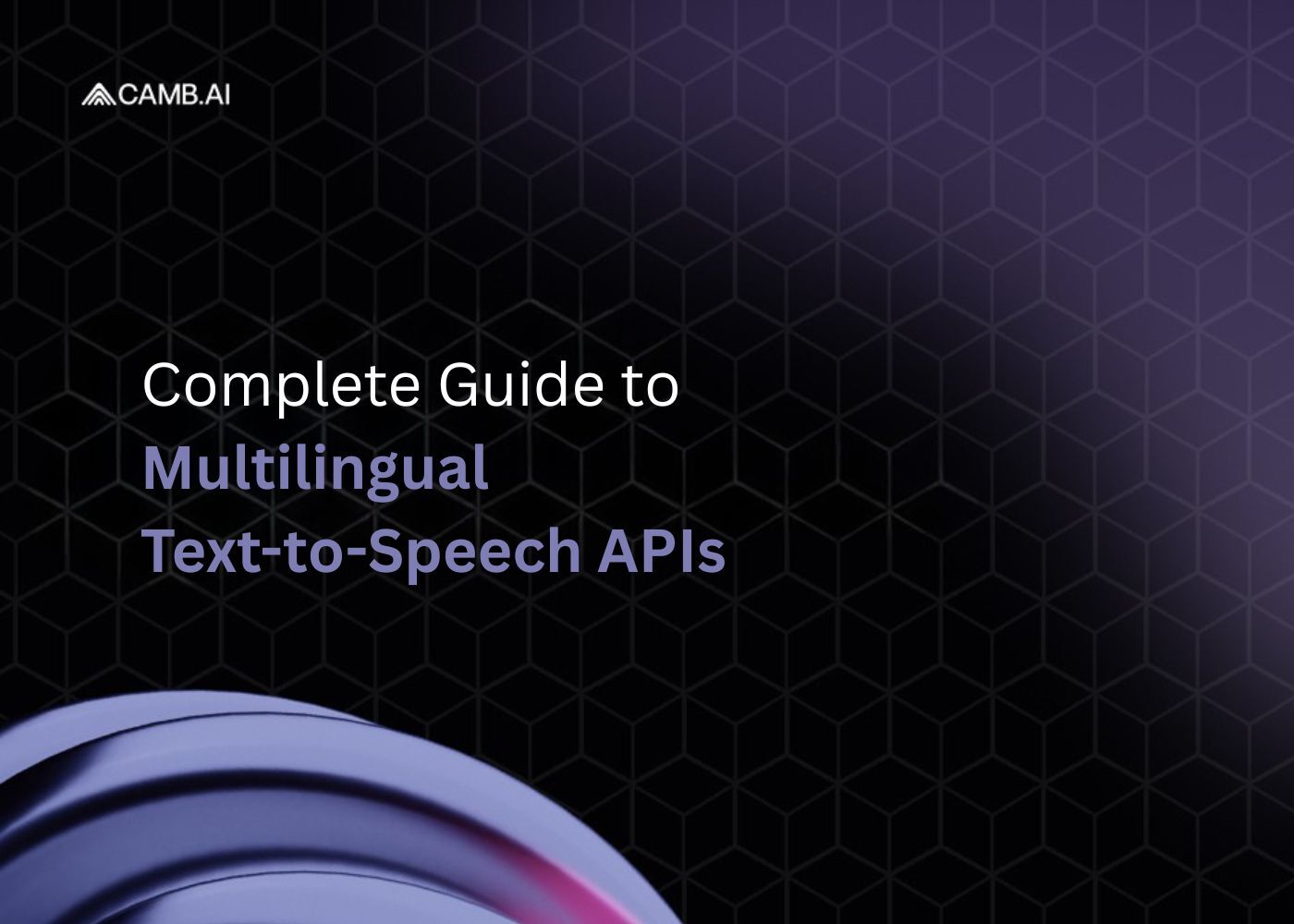文化放送のオリジナル配信プラットフォーム「QloveR」にて、立花慎之介がパーソナリティを務める番組立花慎之介 僕の声で。君の言葉で。が、日本語・英語・中国語に加え、アラビア語、ヒンディー語、フランス語、スペイン語、韓国語の5か国語でも初回配信を開始 — 世界中のファンに“僕の声で、君の言葉で”届けられます。

49.4% of internet content is still published in English, but less than 17% of the global population speaks it natively (source). In other words: nearly five billion people are being excluded from the digital conversation, not because they lack interest, but because creators haven’t spoken to them in their language.
Now imagine you’re running a Major League Soccer (MLS) livestream. Your viewership in North America is solid but what about your fans in Brazil, Spain, Japan, or India?
If your commentary and player interviews are English-only, you're losing millions of potential impressions. The same goes for virtual events, global marketing campaigns, and YouTube channels trying to punch through international markets. You don’t need a translator army.
You need a multilingual text to speech API.
And you need it now.
A multilingual text to speech API is a tool that allows software to turn written text into spoken language in dozens—or even hundreds—of languages. But this isn’t robotic speech anymore. These APIs now mimic human emotion, tone, rhythm, and even cultural nuance with striking realism.
Here’s what’s changed. A few years ago, TTS sounded stiff and robotic. Now, thanks to deep learning, neural synthesis, and prosody modelling, it can sound like your favourite sports announcer, your favourite YouTuber, or your own voice—just in another language.
The shift isn't subtle.
The global market for TTS technologies is growing at a jaw-dropping 30.2% CAGR, set to reach $37.55 billion by 2032 (source).
Driving that growth? Content creators, entertainment brands, educators, and sports franchises using text to speech API multiple languages to tap into international demand.
When you send text to a TTS engine, it doesn't just “read it out loud.” It:
Advanced systems use two stages—non-autoregressive processing to generate fast previews, and then autoregressive modelling to layer in nuance. Add emotion modelling and multilingual transfer learning, and now you're talking to the world.
Want to scale your YouTube videos into Hindi, Arabic, and French—all with the same voice? A powerful text to speech API with multiple languages can keep your vocal identity intact while localising everything else: cadence, tone, phrasing, and colloquialisms.
Let’s break it down—not as a checklist, but through real-world stakes.
Say you're a podcast host. You’re blowing up on TikTok in English but getting tagged by fans in Brazil asking for subtitles. Subtitles are okay. But what if you could give them your actual voice speaking Brazilian Portuguese—complete with the right rhythm, slang, and timing?
For that to work, your API needs three things:
That’s where providers like Camb AI come in. Using just 2–3 seconds of reference audio, Camb’s MARS model recreates voice tone and emotional character across 140+ languages. It’s already powering live AI dubbing for events like MLS and the Australian Open. Here’s how.
Here’s the unfiltered truth: traditional dubbing is slow, expensive, and creatively limiting. Studios take weeks, require native speakers, and still lose emotional accuracy in translation.
In contrast, AI-based multilingual text to speech APIs:
Just look at what happened with the movie Three. Camb AI helped dub it from Arabic to Mandarin—marking the first time in history an Arabic film hit the Mandarin-speaking market using AI dubbing. For the director, it meant unlocking an entire region without reshooting or revoicing.
“Bringing Three to Mandarin-speaking audiences using AI technology is a testament to the power of innovation in storytelling.” — Nayla Al Khaja, Director
Here’s what it really takes to go from script to speech:
Want to try it now? Dub your first video for free on Camb Studio
Real-time TTS engines are now being used in live sports. Camb AI was the first in history to broadcast a soccer game in multiple languages as it happened, with no human translators—just voice AI handling play-by-play in English, Spanish, and Arabic simultaneously.
Next up: virtual events, political debates, and Twitch gaming streams where a single creator speaks 10 languages at once. No lag. No drop in quality.
Want to see what live dubbing looks like? Watch Camb's MLS livestream in action.
Your audience doesn’t wait.
YouTube creators who start localizing now will dominate their verticals tomorrow. Sports leagues that add multilingual commentary will own international fanbases. Brands that deploy real-time text to speech API with multiple languages in their customer service stack will set the tone for the next decade.
And the rest? They’ll wonder why their bounce rates doubled and their ROI tanked.
→ Over 49.4% of content online is English, but fewer than 1 in 6 people speak it natively.
→ A multilingual text to speech API lets you dub, narrate or translate content instantly across 140+ languages.
→ The best systems preserve speaker identity, emotional tone, and pronunciation accuracy.
→ Camb AI powers real-time dubbing for events like MLS and cinema with neural voice cloning.
→ Use cases span YouTube, podcasts, sports, live streams, edtech, and global marketing.
→ If you don’t scale your voice, you will shrink your audience.
Camb AI is the world's most advanced AI speech and translation platform—backed by proprietary models MARS and BOLI, used by studios, sports leagues, and creators worldwide.
From dubbing Major League Soccer games in real time to helping top YouTubers go global in 30+ languages, we’re building voice tech that speaks to every audience.
Try DubStudio or DubStream and reach the world today.
It's a tool that converts written text into human-like speech across multiple languages. It helps you localize content at scale while preserving speaker identity and emotion.
Camb AI currently supports over 140 languages, including low-resource languages like Swahili and Icelandic.
Yes. Camb’s MARS model allows voice cloning across languages, so your voice sounds like you—whether in English, French, or Japanese.
Absolutely. Camb AI’s DubStream allows real-time multilingual dubbing for live sports, concerts, webinars, and more.
You can upload a script or video directly to Camb AI’s DubStudio and select your target languages in seconds.
News, insights, and how-tos; find the best of AI speech and localization on CAMB.AI’s blog. Stay tuned with industry leaders.